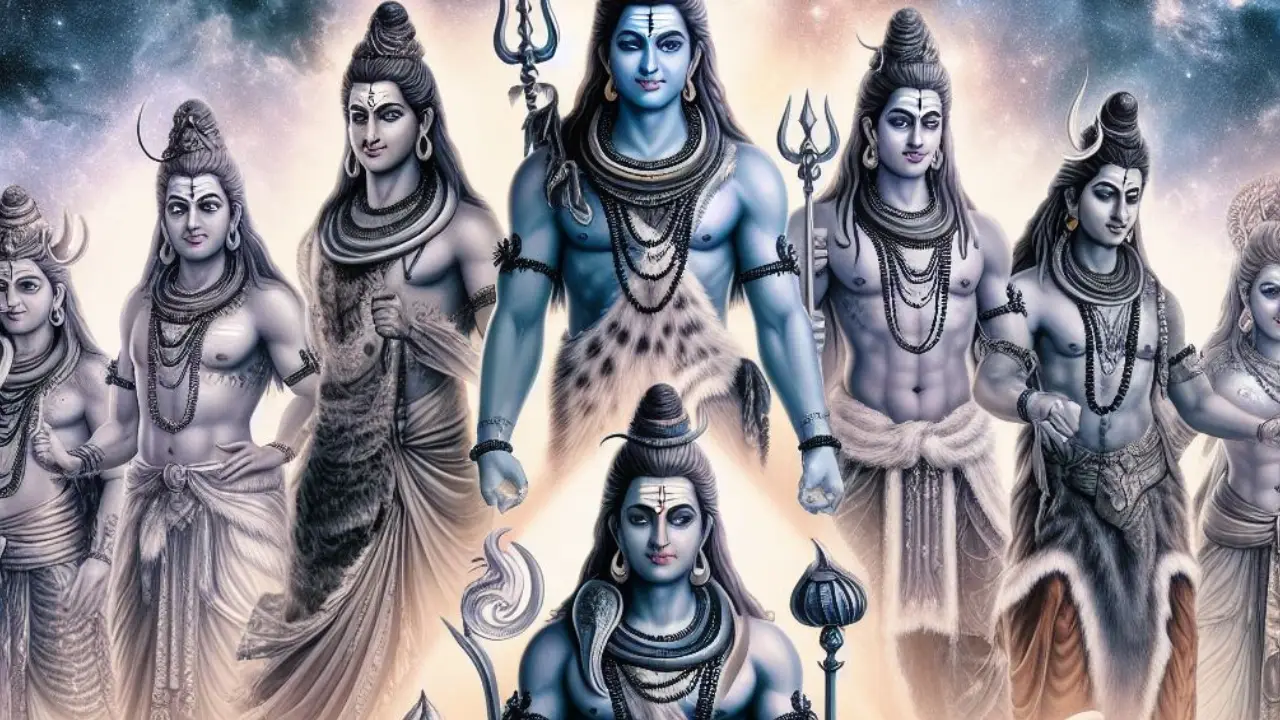In the pantheon of Hindu deities, Lord Shiva stands as one of the most enigmatic and revered figures. Known as the destroyer and transformer in the Holy Trinity (Brahma, Vishnu, and Shiva), he is the embodiment of both asceticism and divine grace. To grasp the essence of Lord Shiva’s multifaceted nature, we must explore the Ashta Murti, Lord Shiva’s eight divine forms through which he manifests his divine presence.
Lord Shiva’s Eight Divine Forms Revealed
1. Nataraja: The Cosmic Dancer
Nataraja, the Lord of Dance, is one of the most iconic forms of Shiva. In this form, he dances the Tandava, symbolizing the cosmic cycles of creation and destruction. His dance signifies the balance of life’s dualities – creation and destruction, birth and death, and the eternal cycle of existence.
2. Rudra: The Fierce One
Rudra, the fierce form of Shiva, represents his destructive aspect. He is often associated with storms, thunder, and calamities. Yet, Rudra’s wrath serves a higher purpose – to cleanse the universe of impurities and pave the way for renewal.
3. Bhairava: The Terrifying Deity
Bhairava is the ferocious and terrifying form of Lord Shiva. He is often depicted with a fierce countenance, holding a trident and standing on a battlefield of skulls. Bhairava reminds us of the impermanence of life and the importance of conquering our fears.
4. Ardhanarishvara: The Androgynous Deity
Ardhanarishvara, a fusion of Lord Shiva and his consort Parvati, embodies the unity of the male and female principles in the universe. This form exemplifies the idea that both masculine and feminine energies are integral to creation.
5. Dakshinamurti: The Silent Guru
Dakshinamurti, the silent teacher, is the embodiment of wisdom and knowledge. Sitting under a banyan tree, he imparts profound teachings through his silence, signifying that true wisdom transcends words.
6. Harihara: The Divine Fusion
Harihara is a unique form of Shiva where half of his body represents Lord Vishnu. This emphasizes the oneness of the two deities. This form signifies the harmony between the principles of preservation and destruction.
7. Lingodbhava: The Infinite Linga
Lingodbhava showcases Lord Shiva emerging as a colossal Linga (phallic symbol), signifying his omnipresence and the formless nature of the divine. Devotees believe that worshiping the Linga grants them spiritual enlightenment.
8. Aghora: The Benevolent Destroyer
Aghora, the compassionate form of Lord Shiva, is often associated with healing and protection. While his appearance might be fearsome, his purpose is to shield devotees from harm and negativity.
Each of these eight forms, known as the Ashta Murti, offers a unique perspective on Lord Shiva’s divine nature. They remind us that divinity encompasses all forms and transcends human comprehension.
Understanding the Significance of Lord Shiva’s Eight Divine Forms
The Ashta Murti of Lord Shiva carries profound spiritual and philosophical significance:
Diverse Manifestations: These forms showcase the diversity of Lord Shiva’s attributes, from creation and destruction to wisdom and protection, making him a complete deity.
Spiritual Lessons: Each form imparts valuable life lessons. For instance, Bhairava teaches us to confront our fears, while Dakshinamurti emphasizes the power of silence in learning.
Symbolism: The symbolism within each form deepens our understanding of the universe’s intricate workings, reinforcing the idea that everything in existence is interconnected.
Worship and Devotion: Devotees can choose the form that resonates most with them. This enables a more personal and heartfelt connection with Lord Shiva during worship.
Read Also:
Embracing Lord Shiva: Hinduism’s Core
Lord Shiva’s Rudra Avatar: Divine Wrath Unleashed
Lord Shiva and Vishnu: The Sacred Divine Connection
The Unity in Diversity with Lord Shiva’s Eight Divine Forms
The Ashta Murti concept also exemplifies the Hindu philosophy of ‘Ekam Sat Vipra Bahudha Vadanti,’ which translates to “Truth is one; the wise call it by many names.” This teaches us that, although Lord Shiva assumes various forms, the underlying divine essence remains the same.
Whether you find solace in Lord Shiva’s compassionate Aghora form or draw inspiration from the cosmic dance of Nataraja, these manifestations guide you on a spiritual journey through the multifaceted facets of divinity.
Conclusion – Lord Shiva’s Eight Divine Forms
In the tapestry of Hinduism, the Ashta Murti or Lord Shiva’s eight divine forms stand as a testament to the richness and depth of its theology. It helps us to remember that the divine is not confined to a single form but is infinite and all-encompassing. As we explore these eight forms, we gain insights into the eternal principles of creation, preservation, and transformation that govern the universe.
As you delve into the worship and contemplation of Lord Shiva’s Ashta Murti, remember that each form offers a unique path to spiritual awakening. It is through these diverse manifestations that we can better understand the profound wisdom and compassion of the Lord of Lords.
Remember, when you approach Lord Shiva, you’re not just connecting with a single deity; you’re opening your heart to the boundless and eternal presence that flows through the cosmos.

